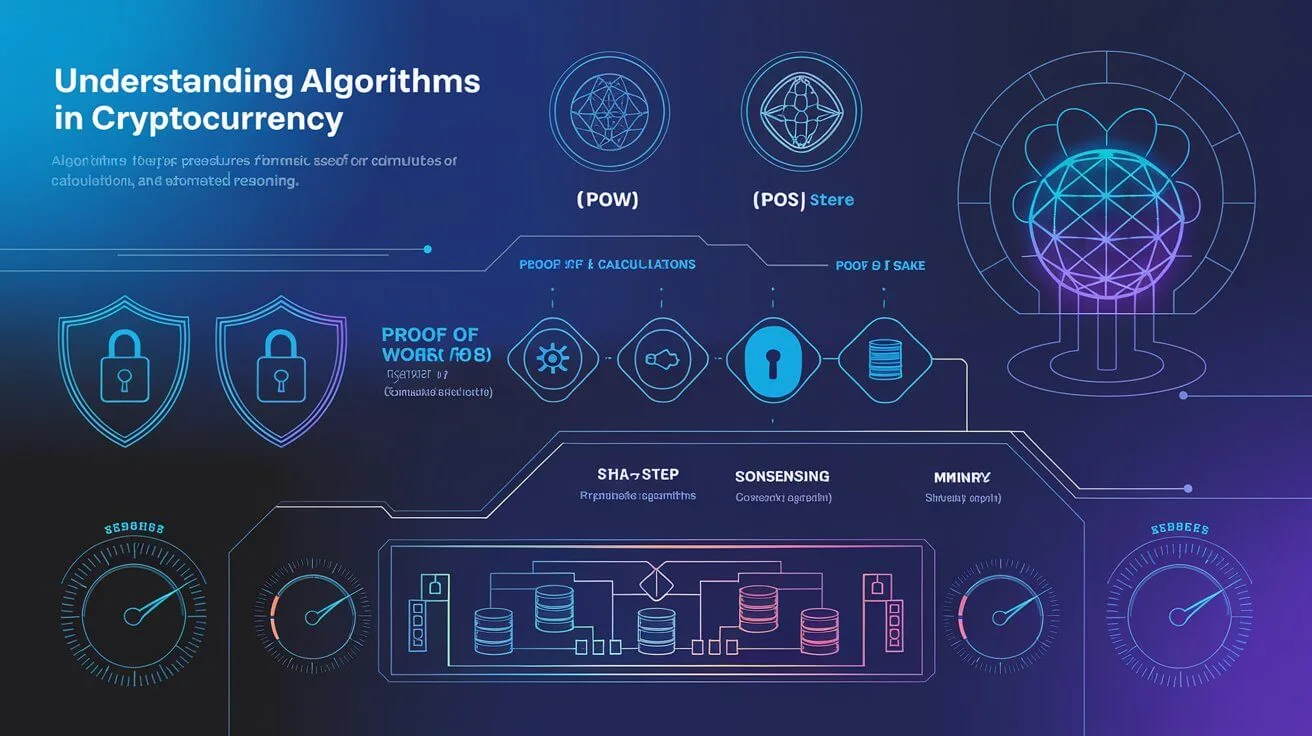The term Algorithm in crypto refers to a sequence of computational steps or rules used to perform calculations, process data, and make decisions in the realm of cryptocurrencies and cryptography. These algorithms are crucial for ensuring the security, efficiency, and integrity of digital currencies and their underlying technologies. In this article, we will explore various aspects of algorithms in cryptocurrency, including their definitions, applications in network security, and the broader implications they have on the crypto ecosystem.
Understanding Algorithms in Cryptocurrency
Algorithms play a vital role in the functioning of cryptocurrencies. They govern everything from transaction processing to consensus mechanisms, which ensure that all participants in a network agree on the state of the blockchain. Here’s a deeper look into what these algorithms entail:
Definition and Explanation
An algorithm, in the context of crypto, can be defined as a series of logical steps designed to accomplish a specific task. In cryptocurrency, common algorithms include:
- Hashing Algorithms: These convert input data into a fixed-size string of characters, which is typically a hash value. This is essential for creating unique identifiers for transactions.
- Consensus Algorithms: These are protocols that consider a transaction valid and confirm its inclusion in the blockchain. Examples include Proof of Work (PoW), Proof of Stake (PoS), and Delegated Proof of Stake (DPoS).
- Encryption Algorithms: Used to secure transactions and user information, ensuring confidentiality and integrity across the network.

Importance of Algorithms in Cryptography and Network Security
In the landscape of digital finance, algorithms serve as the backbone of security protocols, safeguarding sensitive information and preventing unauthorized access. Here’s how they contribute:
Securing Transactions
Cryptographic algorithms like SHA-256 (used in Bitcoin) ensure that transaction data remains unchanged and verifiable. When a transaction is made, it is hashed, creating a unique digital fingerprint. If any part of the transaction changes, the hash will also change, alerting users to potential tampering.
Ensuring Trustworthiness
Consensus algorithms validate transactions before they are added to the blockchain. By requiring a majority agreement among participants, they create a level of trust that is crucial for decentralization. For instance, PoW ensures that miners must invest computational power to solve complex mathematical problems, making it costly for any single actor to manipulate the system.
Enhancing Privacy
Encryption algorithms safeguard user identities and transaction details. By utilizing public key cryptography, users can maintain anonymity while conducting transactions. Only those with the private key can access the associated funds, enhancing privacy.
Popular Algorithms in Cryptocurrency
Several algorithms dominate the cryptocurrency landscape, each serving unique purposes and exhibiting distinct features:
Proof of Work (PoW)
PoW was popularized by Bitcoin and requires miners to solve complex puzzles to validate transactions. Its energy-intensive nature has led to criticism, but it remains effective at securing networks against attacks.
Proof of Stake (PoS)
Unlike PoW, PoS allows validators to create new blocks based on the number of coins they hold. This method is more energy-efficient and encourages users to hold onto their assets.
Delegated Proof of Stake (DPoS)
DPoS combines elements of PoW and PoS by allowing stakeholders to elect delegates responsible for validating transactions. This fosters a more democratic approach to block creation.
Hashing Algorithms: SHA-256 and Scrypt
SHA-256 is the backbone of Bitcoin’s security, while Scrypt is often used in alternative cryptocurrencies like Litecoin due to its memory-intensive requirements. These hashing algorithms ensure data integrity and security.
Elliptic Curve Cryptography (ECC)
ECC is fundamental for generating public-private key pairs, providing high levels of security with smaller key sizes compared to traditional methods.
How to Choose the Right Algorithm for Your Needs
When selecting an algorithm for cryptocurrency application, consider the following factors:
- Security Level: Assess the algorithm’s resistance to attacks, such as double spending or Sybil attacks.
- Speed and Efficiency: Evaluate how quickly transactions can be processed and confirmed.
- Energy Consumption: Understand the resource requirements, especially if sustainability is a concern.
- Community Support: Look for active developer communities that can provide ongoing updates and support.
Conclusion
The significance of algorithms in crypto cannot be overstated. They form the foundation upon which cryptocurrencies operate and thrive, enabling secure transactions, consensus-building, and privacy protection. As the landscape of digital currencies evolves, so too will the algorithms that support them, continually adapting to meet emerging challenges and opportunities. Whether you’re an investor, a developer, or simply a curious observer, understanding these algorithms will enhance your comprehension of the dynamic world of cryptocurrency.

